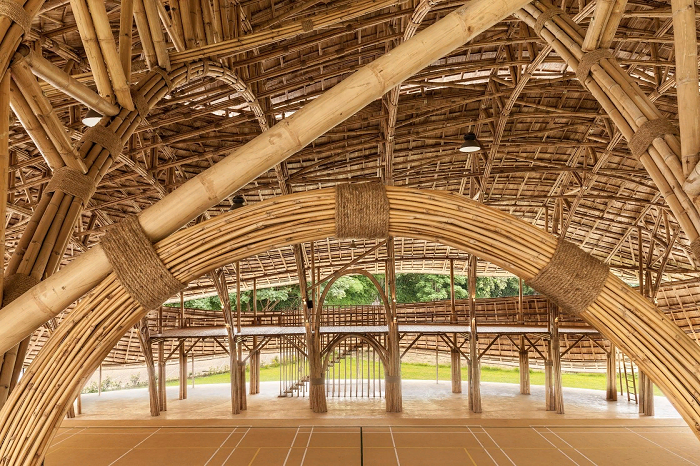If we were to design the perfect building material, it would be similar to bamboo. At least that’s what Neil Thomas, director of London-based construction firm Atelier One, says.
Its tubular shape, vascular bundles, fast growth rate and ease of handling make it ideal for building. Today, it is even more interesting to the market as a renewable source with low environmental impact compared to other materials. In addition, it is extremely versatile and can be used in a variety of ways in construction.
Bamboo is known for its strength and flexibility. According to Thomas: “Its compressive strength is equal to that of concrete, while its tensile strength reaches that of steel.” The material thus becomes extremely versatile and can be used as a structural member of roofs, beams, columns, trusses and other architectural elements. Through the various possible fitting systems or the curves created, the material allows for endless variations to create a unique construction design.
Bamboo can be used to create interior or exterior panels and partitions in buildings. In its natural form, cut into boards, laminated or woven, the material allows for a variety of patterns and textures that can provide privacy in open spaces and protect the space from direct sunlight while acting as an umbrella.
On a smaller scale, bamboo can be used to create furniture – benches and lamps – and decorative items.
Without major intervention, bamboo can also be maintained in its natural form by planting in the ground to define space. Its height creates more private spaces, while its flexibility allows for different scenographies in the space.












Leave a reply